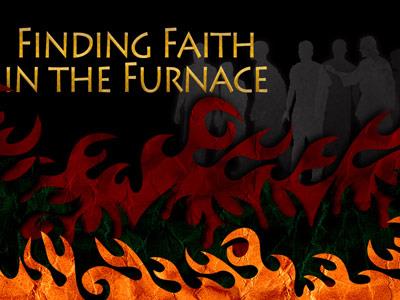-
How To Avoid The "Slow Fade" Series
Contributed by Pat Damiani on Nov 28, 2017 (message contributor)
Summary: Daniel's response to his vision demonstrates how to avoid having our relationship with God slowly fade away.
Go ahead and turn in your Bibles to Daniel 8 as we continue our journey through the Old Testament prophets. This morning, rather than read the entire passage all at once at the beginning, we’ll deal with our passage section by section. As always, the first thing that we want to do is to put this passage in its proper context, and fortunately Daniel does that in the first two verses of the chapter.
BACKGROUND
1 In the third year of the reign of King Belshazzar a vision appeared to me, Daniel, after that which appeared to me at the first. 2 And I saw in the vision; and when I saw, I was in Susa the capital, which is in the province of Elam. And I saw in the vision, and I was at the Ulai canal.
This is the second of four visions that come directly to Daniel. This vision occurs about two years after the one that we looked at last week in chapter 7. Chronologically this vision occurs prior to the events recorded in Daniel 5 and 6.
In his vision Daniel, who is physically present in Babylon, is transported to the city of Susa, which is also known as Shushan. Although at the time of Daniel’s vision, Susa is only a minor, insignificant city, it will later become a leading city in the Persian Empire and the location for the king’s palace as we see in the accounts in both Nehemiah and Esther.
There is one more important observation that we need to make before we proceed. You’ll remember that from the second half of Daniel 2:4 through the end of chapter 7, the Book of Daniel is written in Aramaic because the material there primarily deals with the Gentile nations. But here at the beginning of chapter 8, the writing returns to Hebrew because the rest of the book is primarily concerned with the Jews. Although, as we’ll see in a moment, the prophecies still deal with the Gentile nations who will rule over the Jews, the focus changes from those nations themselves to the injustices that the Jews will experience under this rule.
With this background in mind, we are now ready to look at Daniel’s vision.
THE RAM (vv. 3-4, 20)
Let’s begin by reading the account of the vision:
3 I raised my eyes and saw, and behold, a ram standing on the bank of the canal. It had two horns, and both horns were high, but one was higher than the other, and the higher one came up last. 4 I saw the ram charging westward and northward and southward. No beast could stand before him, and there was no one who could rescue from his power. He did as he pleased and became great.
There is absolutely no doubt which Gentile kingdom is represented by the ram, because when Gabriel, the angel comes and gives Daniel the interpretation of the dream, he clearly identifies the ram:
20 As for the ram that you saw with the two horns, these are the kings of Media and Persia.
• Media-Persia
The ram represents the Medo-Persian Empire, the same empire pictured by the arms and chest of gold in Nebuchadnezzar’s dream in chapter 2 and the beast that looked like a bear in Daniel’s vision in chapter 7. Although it was normal for a ram to have two horns, there is something curious about the horns on this ram. One horn came up later than the other, but it grew and became higher than the other. You’ll remember from last week, that horns in the Bible are often used as pictures of power and the picture of these two horns describes exactly what happened in this divided empire where the Medes initially were stronger, but the Persians, who came to power later, became the dominant power.
Daniel also sees the ram charging to the west, north and south, which would be consistent with the three major conquests of this empire that were also pictured by the three ribs in the mouth of the beast in Daniel 7 – Babylon, Lydia, and Egypt.
THE MALE GOAT (vv. 5-8, 21-22)
Here’s what Daniel saw next in his vision:
5 As I was considering, behold, a male goat came from the west across the face of the whole earth, without touching the ground. And the goat had a conspicuous horn between his eyes. 6 He came to the ram with the two horns, which I had seen standing on the bank of the canal, and he ran at him in his powerful wrath. 7 I saw him come close to the ram, and he was enraged against him and struck the ram and broke his two horns. And the ram had no power to stand before him, but he cast him down to the ground and trampled on him. And there was no one who could rescue the ram from his power. 8 Then the goat became exceedingly great, but when he was strong, the great horn was broken, and instead of it there came up four conspicuous horns toward the four winds of heaven.

 Sermon Central
Sermon Central



